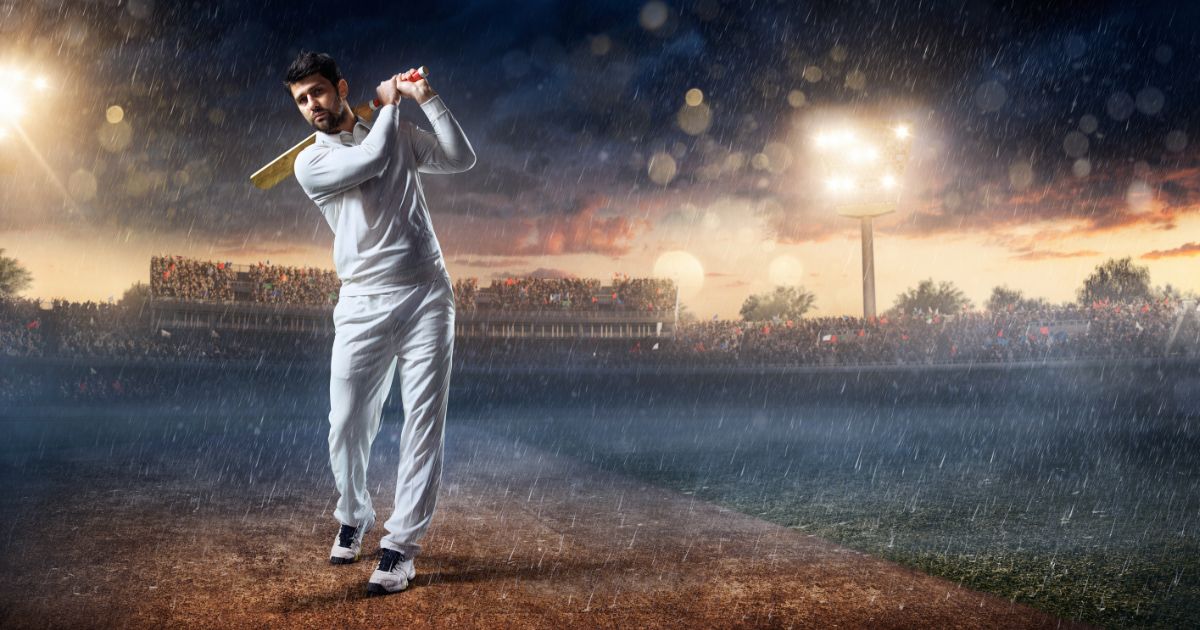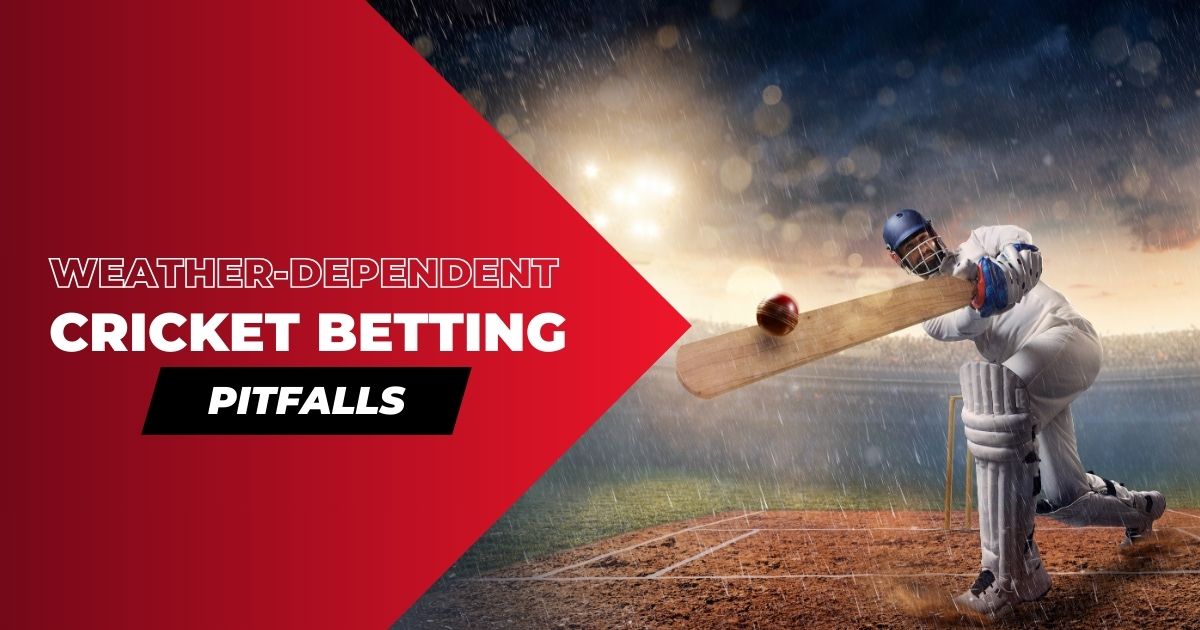The impact of weather on cricket betting is a significant, yet often underestimated, factor for both casual fans and seasoned punters alike.
From the scorching heat of a Mumbai afternoon to the unpredictable winds whistling through Himachal’s mountains, weather conditions can dramatically alter the course of a match, and consequently, the fate of your betting slip.
Understanding how these elements influence the game is crucial for crafting winning betting strategies and separating yourself from the pack.
This comprehensive guide delves into the fascinating interplay between weather, pitch behavior, and cricket betting strategies, equipping you with the knowledge to make informed decisions and emerge victorious in the exciting world of cricket betting.
Understanding the Impact of Weather Conditions on Cricket Betting
Sunny and Dry Conditions
Imagine a dry, sun-baked pitch. Cracks begin to appear, offering assistance to the spinners. The increased turn and bounce make life difficult for batsmen, leading to more dismissals and potentially lower-scoring matches.
This scenario favors teams with skilled spinners like the legendary Anil Kumble or Ravichandran Ashwin. For IPL betting, for instance, pitches at stadiums like Chennai, known for their dryness, might favor teams with strong spin attacks.

Overcast Conditions
Overcast skies bring a change in fortune. The extra moisture in the air aids swing bowling, where the seam of the ball deviates in its flight path after release.
Swing bowlers like Zaheer Khan or Jasprit Bumrah relish these conditions. The ball becomes unpredictable for batsmen, leading to more edges and wickets. This can be a golden opportunity for teams with a potent swing bowling attack, especially in Test match betting where swing has a larger impact.
Remember the historic India-England Test match at Dharamsala, known for its overcast conditions, where swing bowling dominated and perhaps influenced betting predictions.

Rain
Rain, the perennial nemesis of cricket, can wreak havoc on cricket betting proceedings. Rain delays and match interruptions can disrupt the flow of the game, leading to revised targets and altered betting odds.
Additionally, prolonged rainfall can result in a damp outfield, making it challenging for bowlers to grip the ball and extract movement.

Wind
Wind can be a double-edged sword. Strong winds, especially crosswinds, can disrupt the rhythm of both bowlers and batsmen.
Tailwinds, however, can benefit fast bowlers by increasing their pace, potentially leading to more wickets. Conversely, headwinds can make it difficult for them to control their line and length.
Wind can also create drift for spinners, making the ball’s trajectory even more deceptive for batsmen. When considering wind impact on cricket betting, factor in the direction and analyze how it might favor one team’s bowling attack over the other.

Humidity
Humidity plays a subtle yet significant role. As the evening progresses, dew formation can occur, making the ball slightly slippery.
This can be challenging for bowlers to grip and control, potentially leading to more wides and no-balls. Conversely, batsmen relish the opportunity to free their arms and score more easily.
The second innings, therefore, often becomes more batting-friendly under humid conditions. This factor is particularly relevant for T20 betting, where a strong batting performance in the second innings can be crucial for victory.

Historical Insights: Weather’s Impact on Iconic Matches
Cricket history is peppered with examples where weather played a pivotal role.
Remember the 2002 NatWest Series final at Lord’s? Incessant rain forced a Duckworth-Lewis adjustment, handing England a thrilling victory despite India being in a strong position. This highlights the importance of considering rain delays and the Duckworth-Lewis method when making betting decisions.
Strategies for Cricket Betting Based on Weather Forecasts

Now that you understand the weather’s influence, let’s explore strategies to elevate your cricket betting game:
Pre-match analysis and weather predictions
The cornerstone of successful cricket betting lies in diligent pre-match analysis and accurate weather predictions. Prior to placing bets, punters should meticulously scrutinize weather forecasts, leveraging websites and resources that offer reliable weather updates.
Armed with this knowledge, bettors can make informed decisions and capitalize on favorable weather conditions.
Toss Decision
The toss decision can set the tone for the match. By studying weather forecasts, you can gain a significant advantage.
Opting to bowl first in overcast conditions or with swing-friendly pitches can be a wise move. On the other hand, batting first on dry pitches allows batsmen to overcome the initial challenge posed by spinners.
Remember, local weather forecasts specific to the match venue hold immense value.
Player Selection
Weather dictates team composition. Teams with strong spin attacks will have the upper hand on dry pitches. In contrast, overcast conditions call for swing bowlers to take center stage.
Consider the Ranji Trophy, where teams often select spinners based on the traditional dryness of pitches in specific regions. Analyze the weather forecast and team compositions before placing your bets.
Live Betting Adjustments
Adaptability is key in live cricket betting, especially when weather conditions are in flux.
Rain interruptions can necessitate rapid adjustments to betting strategies, particularly with regard to revised targets and live odds changes. Familiarity with the Duckworth-Lewis method is essential for recalibrating betting expectations in rain-affected matches, ensuring that punters remain one step ahead of the curve.
Common Pitfalls in Weather-Dependent Cricket Betting

Even the most seasoned cricket betting pundit can fall prey to weather-related pitfalls. Here are some common ones to stay away from:
Overconfidence in Forecasts
Weather forecasts, while valuable, can be unpredictable. Localized weather patterns and sudden changes can throw a wrench in your plans.
Don’t rely solely on forecasts; consider the historical weather data for the venue and factor in a margin of error.
Ignoring Pitch Reports
Weather isn’t the only factor influencing pitch behavior. Pitch reports, which analyze factors like grass cover and moisture content, offer valuable insights. Don’t overlook them when making your betting decisions.
Neglecting Player Fitness
Extreme weather conditions can take a toll on player fitness and performance. Hot and humid weather can lead to fatigue, while windy conditions can affect a bowler’s accuracy.
Research player fitness levels and how they might be impacted by the weather.
Focusing Solely on Weather
While weather is a significant factor, don’t neglect the importance of team form, player morale, and individual brilliance.
A team with a strong batting lineup might overcome a dry pitch, while a determined bowling attack can exploit even the slightest swing assistance.
People Also Ask (PAA)
Rain delays can significantly impact cricket betting odds. The Duckworth-Lewis method comes into play, and odds are adjusted based on the revised target for the team batting second.
Hot weather can favor both batsmen and bowlers depending on the pitch conditions. On dry pitches, spinners benefit from increased turn and bounce, making it difficult for batsmen. However, on pitches with good grass cover, hot weather can make the ball easier to bat against.
Several weather apps provide detailed forecasts specific to cricket venues in India. AccuWeather and Cricinfo’s weather reports are popular options.
During the monsoon season, expect rain delays and interruptions. Focus on matches played in stadiums with good drainage facilities. Consider betting on teams with strong bowling attacks who can exploit damp pitch conditions.
Windy conditions can present an advantage depending on the direction and strength of the wind. Tailwinds can benefit fast bowlers, while headwinds can disrupt their rhythm. Analyze the wind direction and how it might affect both teams’ bowling attacks before placing a bet.
Yes, some players and teams perform better in specific weather conditions. Spinners thrive on dry pitches, while swing bowlers excel in overcast conditions. Analyze a player’s past performance in similar conditions before placing a bet on their individual performance.
The Bottom Line
Understanding the impact of weather on cricket betting empowers you to make informed decisions. By analyzing weather forecasts, pitch reports, and historical data, you can craft winning strategies.
Remember, weather is just one factor, and a holistic approach considering team form, player performance, and in-game adjustments is key to success. So, the next time you place a cricket bet, don’t just rely on gut feeling. Embrace the role of the weatherman and become a master of the elements in the exciting world of cricket betting!
Want to become a cricket betting pro? GCBI is your one-stop shop! Get access to honest reviews and insider tips to dominate the game.
